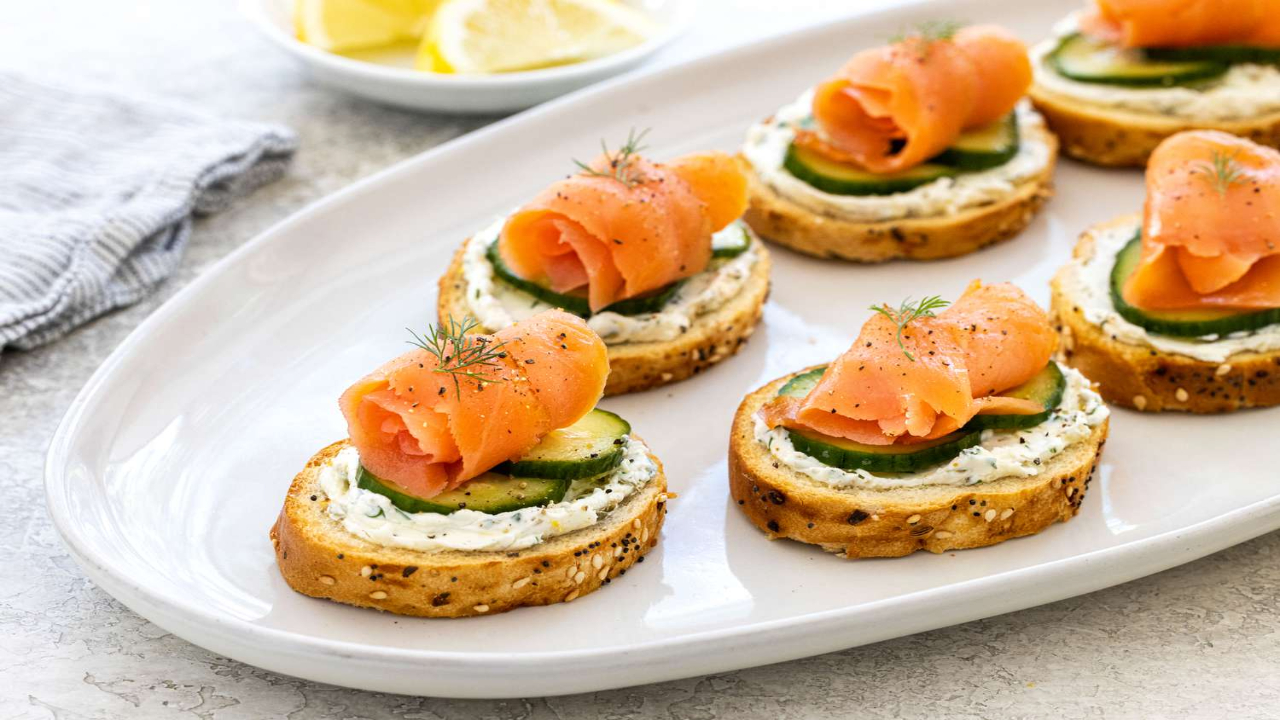Exploring the Delicious World of Lox and Smoked Salmon: A Delectable Delight!
If you're a seafood lover, you've likely encountered the terms "lox" and "smoked salmon" on restaurant menus or at the deli counter. While both are popular choices, there are distinct differences between these two delectable treats. In this article, we'll delve into the world of lox and smoked salmon, exploring their unique tastes, histories, and even learn how to make them at home. Additionally, we'll uncover the mystery of gravlax and its relation to the beloved lox.
All About Lox, and How Lox is Different from Smoked Salmon?
Lox and smoked salmon share a common heritage of being cured fish, but their preparation methods and flavors set them apart. Lox is a traditional Jewish delicacy made from the belly of the salmon. The fish is cured in a brine mixture of salt, sugar, and sometimes spices, without undergoing any smoking process. This curing method results in a silky, velvety texture and a subtle, buttery flavor that seafood enthusiasts adore.
On the other hand, smoked salmon is a product of smoking the fish after curing. The curing process remains similar to that of lox, with a brine or dry cure, but then the salmon is exposed to low-temperature smoke to infuse a smoky flavor into the fish. The smoking process imparts a richer, more robust taste to the salmon, making it a popular choice for those who enjoy a stronger smoky essence in their seafood.
Lox vs. Smoked Salmon: A Palate-Pleasing Comparison
When it comes to taste preferences, choosing between lox and smoked salmon boils down to personal preference. Lox is celebrated for its delicate and buttery flavor, which pairs beautifully with bagels, cream cheese, capers, and red onions—a classic combination known as a "lox bagel." On the other hand, smoked salmon boasts a bolder taste, ideal for pairing with stronger flavors like dill, horseradish, or even in sushi rolls for added depth.
The Rich History of Lox and Its Relation to Gravlax
The origins of lox can be traced back to Scandinavia and Russia, where they traditionally used the term "lox" to refer to any type of salmon. In Scandinavia, gravlax emerged as another beloved cured salmon dish. Gravlax follows a similar curing process to lox but includes the addition of dill and sometimes aquavit or other spirits, giving it a distinctive herbaceous flavor. Over time, the term "lox" became associated specifically with the salt-cured, unsmoked belly of the salmon, while "gravlax" retained its unique preparation and name.
Making Your Own Lox at Home
If you're feeling adventurous and wish to create your own lox, it's surprisingly simple to make at home. All you need is fresh salmon fillets, a curing mixture of salt, sugar, and optional spices, and a few days for the curing process to work its magic. With minimal effort, you can indulge in the velvety goodness of homemade lox that will impress your friends and family.
In conclusion, lox and smoked salmon stand as two exceptional options in the realm of cured seafood. Lox charms with its delicate, buttery notes, while smoked salmon captivates with its alluring smokiness. Embrace the rich history of lox and its relation to gravlax, and for those seeking a culinary adventure, try making your own lox at home. Whichever delicacy you choose, whether it's a classic lox bagel or a savory smoked salmon dish, your taste buds are in for an unforgettable treat!

